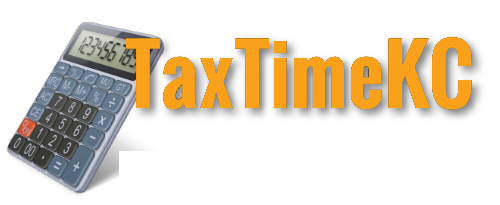
by r Hampton | Sep 5, 2019 | Tax News
Tax Tip 2019-122, September 5, 2019
Tax professionals and their employees can take steps to help prevent thieves from stealing sensitive data. Cybercriminals use phishing emails and malware to gain control of computer systems or to steal usernames and passwords.
Here are some simple steps that tax pros and their employees can take to protect their clients’ data. They should:
- Use separate personal and business email accounts.
- Protect email accounts with strong passwords and two-factor authentication if available.
- Install an anti-phishing tool bar to help identify known phishing sites.
- Use anti-phishing tools that are included in security software products.
- Use security software to help protect systems from malware and scan emails for viruses.
- Never open or download attachments from unknown senders, including potential clients. They should instead make contact first by phone.
- Send only password-protected and encrypted documents when files must be shared with clients over email.
- Not respond to suspicious or unknown emails.
- Forward scams that are related to the IRS to phishing@irs.gov.
All tax professionals should remember they must have a written data security plan. This is required by the Federal Trade Commission and its Safeguards Rule.
More information:
Subscribe to IRS Tax Tips
– Story provided by IRS Tax Tips

by r Hampton | Sep 4, 2019 | Tax News
IRS Tax Tip 2019-120, September 3, 2019
Tax professionals should remember to educate everyone who works for them to be on the lookout for phishing emails. Sending scam emails is still the most common tactic used by cybercriminals to steal sensitive data.
More than 90 percent of all data thefts start with a phishing email. Cybercriminals use phishing emails and malware to gain control of computer systems or to steal usernames and passwords. It’s important tax pros and every single one of their employees know how to spot these scams. Tax professionals and others in the business world are only as safe as their least educated employee.
Here are some tactics thieves use to steal data:
Spear phishing
- Spear phishing is a type of phishing scam. The objective of a spear phishing email is to pose as a trusted source and “bait” the recipient into opening an embedded link or an attachment. The email may make an urgent plea to the tax pro to update an account immediately. A link may seem to go to another trusted website, but it’s actually a website controlled by the thief.
Keylogging
- An attachment may contain malicious software called keylogging. This software secretly infects a computer and provides the thief with the ability to see every keystroke. Thieves can then steal passwords to various accounts. The thief can even take remote control of computers, enabling them to steal taxpayer data.
Pretending to be a client
- A common spear phishing scam is when the thief poses as a prospective client and sends an unsolicited email to a tax professional. After an exchange of emails, the thief sends a follow-up email with an attachment. The thief claims it contains the tax information needed to prepare a return. Instead, it contains spyware that allows thieves to track each keystroke.
Sending links
- Thieves pose as tax software providers or data storage providers with emails containing links. These links go to web pages that mirror real sites. The thieves’ goal is to trick tax professionals into entering their usernames and passwords into these fake sites, which the crooks then steal.
Ransomware
- Another trick used by thieves is ransomware. In this scam, the thief doesn’t steal the data, they encrypt it. Once they encrypt the data, thieves demand a ransom in return for the code to unencrypt the data. The FBI warns users not to pay the ransom because thieves often don’t provide the code.
More information:
Subscribe to IRS Tax Tips
– Story provided by IRS Tax Tips

by r Hampton | Aug 31, 2019 | Tax News
Time is running out for taxpayers who need to renew an expiring ITIN before next filing season.
In June, the IRS issued a press release reminding taxpayers that failing to renew an expiring ITIN can result in refund delays and ineligibility for some tax credits. While ITINs are only used by taxpayers who can’t get a Social Security Number, the IRS reported “nearly 2 million … are set to expire at the end of 2019.”
In the release, the IRS suggested two factors that could lead to ITIN expiration at the end of this year:
- “Under the Protecting Americans from Tax Hikes (PATH) Act, ITINs that have not been used on a federal return at least once in the last three consecutive years will expire Dec. 31, 2019”
- “ITINs with middle digits 83, 84, 85, 86, or 87 that have not already been renewed will also expire at the end of the year”
If either of those circumstances applies to ITIN holders who will need to file a tax year 2019 return, the IRS said they should “complete a Form W-7 and submit all required documentation.” In addition to providing a link to the form instructions, the IRS pointed out that taxpayers can renew ITINs for every member of their family at the same time.
To help taxpayers avoid problems when renewing their ITIN, the IRS put together a list of common errors. Here are the regular offenders:
- “Mailing identification documentation without a Form W-7”
- “Missing information on the Form W-7”
- “Insufficient supporting documentation, such as U.S. residency documentation or official documentation to support name changes”
ITIN holders need to have proof of U.S. residency for any dependents “from a country other than Canada or Mexico, or dependents from U.S. military personnel overseas” that they want to claim on their return. If the dependents’ passports are not stamped with the date of entry, then the ITIN applicants will have to supply other information, like medical and school records.
According to the IRS, affected taxpayers should have already started receiving CP48 Notices. If any of your clients are ITIN holders, now is as good a time as any to prepare for renewal questions. For more information, visit the “Individual Taxpayer Identification Number” page on IRS.gov. The IRS also offers videos explaining ITINs in English and Spanish.
Sources: IR-2019-118, “Individual Taxpayer Identification Number”
– Story provided by TaxingSubjects.com

by r Hampton | Aug 30, 2019 | Tax News
IRS Tax Tip 2019-119, August 29, 2019
Tax pros must create a written security plan to protect their clients’ data. In fact, the law requires them to make this plan.
Creating a data security plan is one part of the new Taxes-Security-Together Checklist. The IRS and its Security Summit partners created this checklist. It helps tax professionals protect sensitive data in their offices and on their computers.
Many tax preparers may not realize they are required under federal law to have a data security plan. Each plan should be tailored for each specific office. When creating it, the tax professional should take several factors into consideration. This includes things like the company’s size, the nature of its activities, and the sensitivity of its customer information.
Creating a plan
Tax professionals should make sure to do these things when writing and following their data security plans:
- Include the name of all information security program managers.
- Identify all risks to customer information.
- Evaluate risks and current safety measures.
- Design a program to protect data.
- Put the data protection program in place.
- Regularly monitor and test the program.
Selecting a service provider
Companies should have a written contract with their service provider. The provider must:
- Maintain appropriate safety measures.
- Oversee the handling of customer information review.
- Revise the security program as needed.
More information:
Subscribe to IRS Tax Tips
– Story provided by IRS Tax Tips

by r Hampton | Aug 30, 2019 | Tax News
Owning your own business can be a very rewarding experience. The process of starting a business, however, can seem overwhelming to the uninitiated. There are so many choices to consider – from business plans to market strategies and tax responsibilities.
The IRS has put together a quick list of items any new owner of a business will have to determine. While the list may be the most benefit to first-time business owners, it can help owners of any new enterprise get off to a good start.
- Choose a business structure. The form of business determines which income tax return a business taxpayer needs to file. The most common business structures are:
- Sole proprietorship: An unincorporated business owned by an individual. There’s no distinction between the taxpayer and their business.
- Partnership: An unincorporated business with ownership shared between two or more people.
- Corporation: Also known as a C corporation. It’s a separate entity owned by shareholders.
- S Corporation: A corporation that elects to pass corporate income, losses, deductions, and credits through to the shareholders.
- Limited Liability Company: A business structure allowed by state statute.
- Choose a tax year. A tax year is an annual accounting period for keeping records and reporting income and expenses. A new business owner must choose either:
- Calendar year: 12 consecutive months beginning January 1 and ending December 31.
- Fiscal year: 12 consecutive months ending on the last day of any month except December.
- Apply for an employer identification number. An Employer Identification Number or EIN is also called a federal tax identification number. It’s used to identify a business. Most businesses need an EIN.
- Have all employees complete these forms:
- Form I-9, Employment Eligibility Verification
- Form W-4, Employee’s Withholding Allowance Certificate
- Pay business taxes. The form of business determines what taxes must be paid and how to pay them.
Taxpayers interested in starting a business can find information for some industries on the IRS’ Industries/Professions Tax Centers webpage. Each state has additional requirements for starting and operating a business. Prospective business owners should visit their state’s website for info about state requirements.
More information may also be found on the Small Business Administration’s web page 10 Steps to Start Your Business.
– Story provided by TaxingSubjects.com

by r Hampton | Aug 29, 2019 | Tax News
IRS Tax Tip 2019-118, August 28, 2019
Taxpayers who must file Form 2290, Heavy Highway Vehicle Use Tax Return, have more time to do so this year. That said, the deadline will be here before they know it. Taxpayers must file their 2019 Form 2290 by Tuesday, September 3. Normally, the due date is August 31. However, this year the weekend and a federal holiday extended the 2019 date.
All the information needed to file is on the Trucking Tax Center. Taxpayers can use the friendly URL IRS.gov/trucker.
Anyone who has registered or is required to register a heavy highway motor vehicle must file Form 2290. While some taxpayers who file this form are required to do so electronically, all 2290 filers can file online. These taxpayers can use their credit or debit card to pay the Heavy Highway Vehicle Use Tax.
Filing Form 2290 electronically helps speed up the return of an IRS-stamped Schedule 1 to the taxpayer as proof of payment. Taxpayers need Schedule 1 for state registration.
Taxpayers with questions can call the IRS Form 2290 Help Line. It is available between 8 a.m. and 6 p.m. EST:
Taxpayers who want help in person must call 844-545-5640 to schedule an appointment at an IRS office.
The Trucking Tax Center is also available in Spanish.
More Information:
Subscribe to IRS Tax Tips
– Story provided by IRS Tax Tips






 TAXTIMEKC
TAXTIMEKC